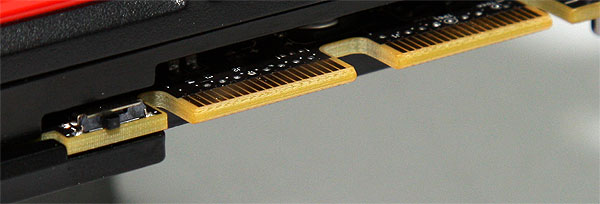New Power Management - AMD PowerTune | Dual BIOS
New Power Management - AMD PowerTune
AMD PowerTune is a new technology that opens up a new direction for maximum performance versus TDP.
AMD now can regulate the TDP with the help of active monitoring. Basically you can lower TDP, have it normal or increase the thermal headroom of the graphics cards though the Catalyst drivers. The new feature allows the GPU to be designed with higher engine clock speeds which can be applied on the broad set of applications that have thermal headroom.
So at default it will try and keep your power consumption and TDP at a pre-defined baseline, say 200 Watt. But you'll also have a margin to increase that TDP to say +20%, or vice versa when you want to limit your power draw you can lower the power usage by -20% (or anything in-between).
- AMD PowerTune can enable higher performance that is optimized to the thermal limits of the GPU by dynamically adjusting the engine clock during runtime based on an internally calculated GPU power assessment.
- AMD PowerTune technology also deals with with applications that would otherwise exceed the GPUs TDP like OCCT, Furmark or 3DMark's perlin noise tests. It does so by dynamically managing the engine clock speeds based on calculations which determine the proximity of the GPU to its TDP limit.
- AMD PowerTune allows for the GPU to run within its TDP budget at higher nominal clock speeds than otherwise possible.

So a monitoring function on the graphics card can be used to downclock your card when needed. And the flipside of the coin is that it can be directly adjusted by the user using the AMD Catalyst Control Center and used for tweaking and overclocking as you can allow for a more aggressive power containment (and therefore more aggressively limit power and heat) or be used by enthusiasts to relax the enforcement of factory thermal constraints on their AMD Radeon HD 6900 Series Radeon graphics card and squeeze every last bit of performance - at the cost of a much higher TDP of course.
Later on in our benchmark sessions we'll have some examples of what kind of effect this has on overall performance.
What's That New Switch?
If you look at the photo below you'll notice a tiny micro-switch next to the two CrossfireX connectors. The R6900 cards now have one firmware flashable dual-BIOS and one (non flashable) default BIOS, with the switch you can select BIOS 1 or 2.
AMD implemented the feature likely to prevent the RMA rate. They know very well that the enthusiast community often re-flashes their cards, often unsuccessful after which they enter a very expensive RMA procedure at AMD's cost.
So this feature is a bit of a failsafe. However for the real tweakers it's an advantage. You could overclock and over-volt the product based on a predetermined set of preferences of your choice, flash it into the BIOS and with the flick of a switch you can have either a performance or default BIOS at your disposal.
It's definitely not a bad thing to have on any graphics card really and we certainly appreciate the implementation.

